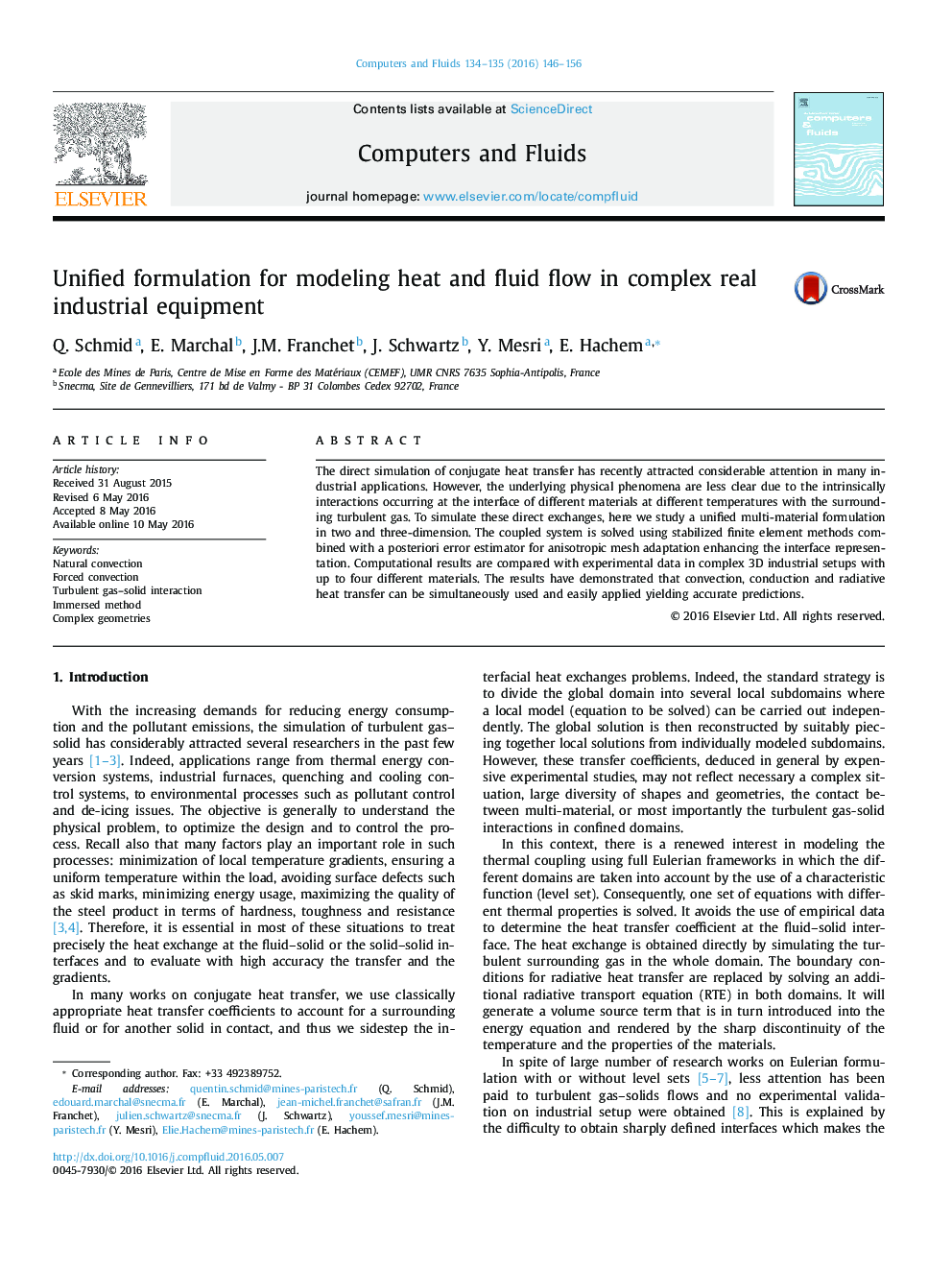| Article ID | Journal | Published Year | Pages | File Type |
|---|---|---|---|---|
| 768065 | Computers & Fluids | 2016 | 11 Pages |
•Accurate unified 3D multi-material formulation for conjugate heat transfer.•Stabilized three-field (v, p, T) formulation for turbulent gas-solid flow.•Level set with an a posteriori error estimator for complex fluid–solid interface.•Real industrial cases with increasing complexity and experimental data.•Conceptual simplicity for boundary layers with highly stretched elements.
The direct simulation of conjugate heat transfer has recently attracted considerable attention in many industrial applications. However, the underlying physical phenomena are less clear due to the intrinsically interactions occurring at the interface of different materials at different temperatures with the surrounding turbulent gas. To simulate these direct exchanges, here we study a unified multi-material formulation in two and three-dimension. The coupled system is solved using stabilized finite element methods combined with a posteriori error estimator for anisotropic mesh adaptation enhancing the interface representation. Computational results are compared with experimental data in complex 3D industrial setups with up to four different materials. The results have demonstrated that convection, conduction and radiative heat transfer can be simultaneously used and easily applied yielding accurate predictions.
